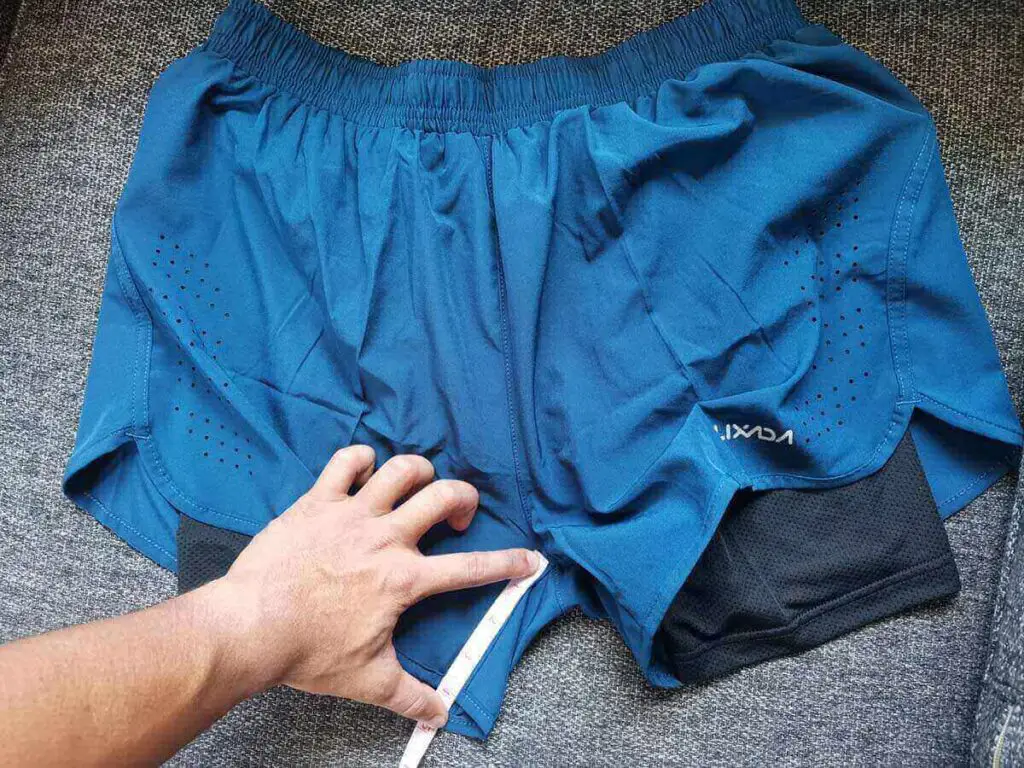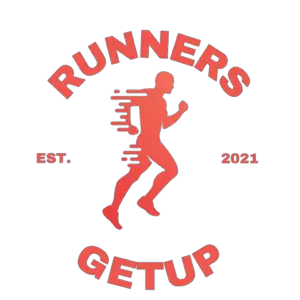This post contains affiliate links.
Having a pair of running shorts that fit you perfectly is key to having a great run, every run. There is perhaps nothing more frustrating to a runner than experiencing friction or chafing during a running session, and they can put a damper on your motivation.
To measure your running shorts, use a ruler or a tape measure and measure the length from the crotch to the end of the running shorts on the inside thigh side of the shorts. This is known as the inseam length. Most elite athletes prefer 2-3 inches because it offers more range of motion.
Ahead, we will look at how to measure running shorts in detail. We will also look at the different types of running shorts so stick along to learn more.
Measuring Running Shorts

As with most garments, the correct measurements are essential for a perfect fit. Ensuring that you have running shorts with accurate measurements is crucial to a successful running session.
If your shorts do not fit properly, they will not be able to improve comfort and flexibility, and can actually end up hindering those things, as well as cause irritation such as chafing. Most inexperienced runners are perplexed at just how running shorts are measured. Let’s change that.
The specific length of a pair of running shorts is known as the inseam length. This inseam is measured from the crotch along the inside of the leg, to the point where you prefer your shorts to end.
Two-inch running shorts allow for the most freedom of movement when running, as they usually fall right under the crotch area. They are designed to relieve excess sweat, heat, and also modesty, as they are one of the shortest pairs out there.
These shorts are favored by the majority of competitive runners, as they are well suited for both marathon runs as well as sprinting.
If you’re still wondering why most running shorts are so short, I’ve made an article about it. Check it out.
The more common type of running shorts amongst casual and non-competitive runners is five-inch shorts. These shorts are explicitly designed to be used for most sports and activities out there.
Five-inch running shorts are perfect for both running and general workout sessions. Quite ironically, these shorts fall at around four to six inches above the knee, depending on the height of the wearer.
These shorts provide a chafe-free running experience and offer just the right amount of muscle compression to help make running a little easier.
By the way, my favorite running shorts are the Under Armour HeatGear long shorts (link to Amazon). I like them cause they’re breathable, they look great, and they prevent chafing.
Running Shorts: The Basics
While any running enthusiast could use any old pair of shorts that they feel relaxed and comfortable in to run, there are specific pairs of shorts that are designed with the express purpose of being worn while running. There are also various different types of running shorts that are suited to different needs and preferences, so finding the right pair for you is essential.
These preferences are usually regarding the way that the running shorts look, feel, and perform when running. It is essential to have at least some basic knowledge about running shorts before you go out and buy a pair.
Whether you plan on wearing your running sports to compete professionally, for sporting events, for training, or for simple decompression and relaxation, a good pair of running shorts should be practically designed, and also comfortable to wear.
Finding the correct fit will help prevent chafing, bouncing, and several other distractions that can hinder you from enjoying your run.
Running shorts are a unique item of clothing that is worn by runners, as you may have guessed by their name. They are specifically designed to facilitate free movement and improve comfort while running and during various other exercises.
The materials that are used when manufacturing running shorts are durable and lightweight. Most running short brands feature an inner lining that acts as a sort of underwear.
Wearing underwear is not usually needed with these types of running shorts, as the compression liner negates the need for them. Polyester is one of the most common fabrics used in the production of running shorts, which is also what most brands of underwear are made from.
Not everyone is comfortable with the idea of going commando. But don’t worry, there are certain types of underwear that are great to wear under running shorts and I’ve outlined them in another article. Make sure to check it out.
A well-made pair of running shorts will not cause the runner any itching when they become wet and also allows for a freer range of movement when running. Most running shorts have seams that are cut up near the outer side of both legs to allow for unrestricted movement.
Shorts that have half split seams are the shortest, while square leg shorts do not have any splits. Longer shorts are not well suited for running, as your stride will likely pull up the fabric of the shorts, which leads to some significant discomfort.
Types Of Running Shorts
As we mentioned earlier, there are numerous types of running shorts, all of which fall into three main categories: split shorts, compression shorts, and V-notch shorts.
Compression Shorts
Compression shorts fit close to the body and are quite tight-fitting. They are practically identical to cycling chamois, but also include extra padding.
Compression shorts are far warmer than most pairs of running shorts, and provide much more muscle support, due to their tight fit around the body. They also prevent friction and chafing the most.
The superior stretch that they provide allows for heightened flexibility, and are generally considered the most comfortable shorts on the market by many athletes. The length of compression shorts usually varies for men and women’s styles, with women’s often being about an inch shorter than men’s.
I have a pair of Under Armour HeatGear long shorts and I highly recommend them if you’re interested in compression shorts. I’ve used them in many athletic activities and they feel really nice. Check the price on Amazon if you want one.
V-notch Shorts
These are the most popular style of running shorts and earn their title from the V-shaped cutout that is located on the outer leg seams. This cutout offers more range of movement than what would be available if the seams were stitched all the way down the leg.
These shorts provide a much looser fit in comparison to compression shorts, but, like compression shorts, they tend to be shorter in women’s styles than in men’s.
Split Shorts
Split shorts and V-notch shorts are very similar, which causes most people to confuse the two. However, there exist some key differences between them.
The shape of a pair of split shorts has a panel in the front that overlaps a panel in the back. Divided shorts tend to have a V-cutout at the bottom, as well as an overall loose fit. Split running shorts are the most performance-based style, as they offer the broadest range of motion to runners.
The inseams of split shorts are generally shorter, starting at around 1 inch for men and women.
By the way, if you’re interested in learning more about the different types of running shorts, make sure to check this article that I made about the different types of running shorts.

